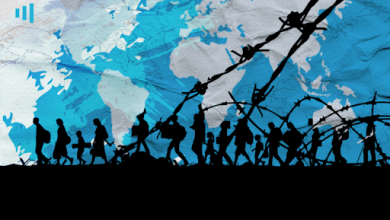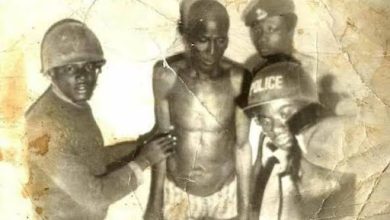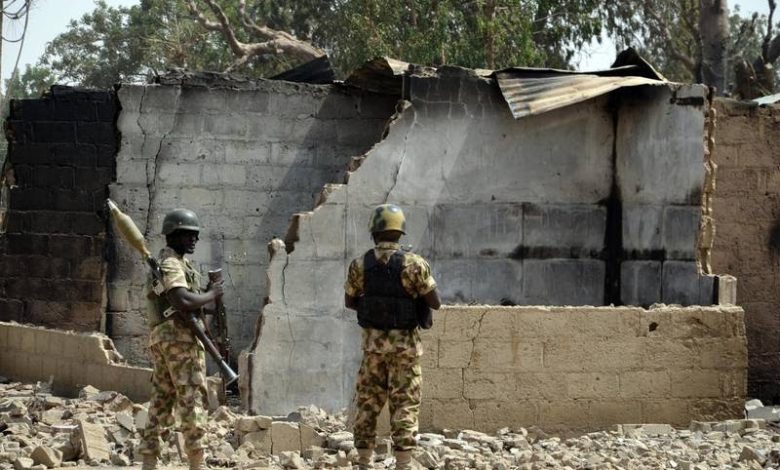
The Boko Haram uprising, which erupted in July 2009 in northeast Nigeria, shocking the country’s unprepared security and political establishment, marked the opening salvo of a protracted and constantly mutating insurgency.
Although the socio-economic foundation and ideological motivations were laid much earlier in the 1990s and early 2000s, political and security inaction and wrong actions worsened the crisis; ranging from failure to nip the brewing crisis in the bud, the highhanded tactics of the security outfit Operation Flush, to subsequent brutal state repression.
An estimated 1,000 strong military contingent was deployed to Maiduguri, the Borno state capital and epicentre of the unfolding clashes between security forces and extremist group members.
The campaign left hundreds dead and the sect’s headquarters and mosque in ruins. Days later, Boko Haram’s leader, Mohammed Yusuf, was captured by the Army and then extrajudicially killed in police custody.
In the last twelve years, the Boko Haram insurgency has gone through numerous phases ranging from assassinations, bombings within and outside the region, to the overrunning of a large swath of territories and declaration of a caliphate (state).
Faced with a security crisis, the government carried out the Joint Task Force (JTF) operation against Boko Haram insurgents code-named Operation Restore Order I, II and III in succession between 2011 and 2013.
The Nigerian government, on May 14, 2013, declared a state of emergency in the three worst-affected states of Adamawa, Borno, and Yobe. Following this, the JTF operation was conducted alongside Operation Boyona, derived from the names of the three states covered by the state of emergency declaration.
Similarly, the Civilian Joint Task Force (CJTF), a local militia, emerged in 2013 to support security forces in the fight against Boko Haram and to protect communities from attacks.
It has since gone on to assume a formal outlook with the use of uniforms, assault rifles, checkpoints, and patrol vans. The military’s counterinsurgency operation also entered a new phase as the control of the mission reverted to the Army Headquarters, and Operation Zaman Lafiya was organised.
Battles with security forces drifted occasionally from urban clashes in built-up areas to hinterland communities: Lake Chad axis, forest areas such as Sambisa and Alagarno and the Gwoza Hills – the Mandara Mountain range.
The insurgency reached its peak between the last quarter of 2014 and early 2015 as the fighters overran towns and military bases despite the state of emergency.
In 2015, as Nigerian troops and neighbouring Lake Chad basin states began a major military offensive against Boko Haram, the group was forced to abandon towns including its self-proclaimed capital, Gwoza, for hinterland areas, gradually adopting an asymmetric approach.
The Army launched Operation Lafiya Dole to replace Zaman Lafiya in 2015 as troops recaptured lost territories and the rejigged Multinational Joint Task Force (MNJTF) took shape conducting joint and independent missions.
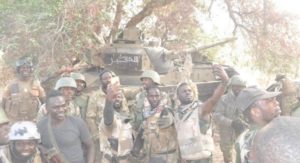
The counteroffensive and subsequent operations code-named Deep Punch between 2015 and the first quarter of 2018 caused attrition and bleeding of Boko Haram capacity, exacerbated by the formation of a splinter group.
The group has had breakaway factions starting in 2003 with the “Nigerian Taliban’’ in Kannamma, and shortly after the 2009 revolt, a group appeared opposing the violent path of the new leader, Abubakar Shekau. Later on, Ansaru, an Al-Qaeda-oriented faction disgruntled with the Boko Haram leader’s indiscriminate tactics, was formed in 2012.
In 2016, a large group broke off and moved to Alagarno forest and Northern Borno-Lake Chad axis, retaining the ISWAP designation, which Boko Haram earlier adopted after Shekau pledged allegiance to Abu Bakr al-Baghdadi and joined Islamic State (IS) in March 2015.
ISWAP, headed by a second-generation fighter Abu Musab al-Barnawi (Habib Yusuf), son of Mohammed Yusuf, became the dominant and lethal terror group in the region – carrying out raids on bases, exploiting resources and collecting taxes in areas where the group wielded influence.
In response to the overrunning of Forward Operating Bases between 2018 and 2019 by ISWAP, the military established super camps in or close to garrison towns, from where troops are deployed for patrols, raids, and to provide security along major routes.
The first quarter of 2021 began with a significant military operation code-named ‘Operation Tura Takai Bango’ in Sambisa and Alagarno forest against both Boko Haram and ISWAP.
Ironically, Tura Takai Bango, a Hausa phrase which means a state where one is pushed to the wall, were the exact words used by Mamman Nur during a sermon in the tense days preceding the revolt in Maiduguri.
The operation faced stiff resistance but made some gains as troops advanced, backed by new hardware like the ST1 105mm fire support vehicles, VT-4 MBT tanks, SH-5 self-propelled artillery and Phantom II APCs.
However, the campaign, which was expected to include a second phase in northern Borno, gradually slowed down when ISWAP was launching attacks on garrison towns and super camps.
In April 2021, the Army approved the renaming of the Counter-Insurgency Operation from Operation Lafiya Dole to Operation Hadin Kai.
The second quarter was accompanied by changes in the structure and organisation of ISWAP, on the tail of the arrival of IS emissaries, ISWAP fighters from Libya and the reemergence of Abu Musab Al-Barnawi as interim leader.
In May, a swarm of ISWAP fighters swept through the Boko Haram stronghold of Sambisa. The raid culminated in the death of Abubakar Shekau and the absorption of fighters and territories.
This development resulted in the blend of ISWAP and Boko Haram tactics in areas southeast of Borno, such as Bama and adjoining regions of the Far North of Cameroon, traditionally under Boko Haram’s area of presence.
Some Boko Haram fighters have joined their former associates (ISWAP), while others like the Boko Haram Lake Chad sub-faction have remained defiant. In contrast, some have either migrated from the area or surrendered to state officials in Nigeria and Cameroon.
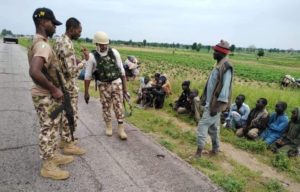
The 12-years-long insurgency in Northeast Nigeria and Lake Chad Basin, which has led to nearly 350,000 deaths, mostly from indirect causes, and displaced over two million people, is currently going through a distinct phase.
The outcome will be determined by internal factors within the insurgency or external factors from state or regional intervention.
The generation of fighters in the group(s) is also drifting away from the first generation that were adults during the riots in Maiduguri and initial clashes to the second generation and other newer recruits bringing new dynamics to the mix.
As such, the revamping of national and transnational counter-insurgency strategies to accommodate the dynamics of the current phase of the crisis has become imperative.
This will allow for an improved state response to the insurgency and factors sustaining it.
In a new report published in July, Tony Blair Institute’s Global Change advised that counterterrorism and counter-extremism efforts needed to include anthropological evaluations as part of operations planning to combat Boko Haram in Nigeria and across Lake Chad Basin.
“As Boko Haram recruits and infiltrates society by channelling its ethnic heritage and expertise, governments and international actors would benefit from an anthropological analysis of cultures and traditions to prevent this exploitation and protect at-risk communities effectively,” the report said.
HumAngle understands that countering the group’s radicalisation and presence in hinterland communities will require a multidimensional and multilayered approach that does not focus solely on military efforts but a combination of several interventions, including expanding governance, addressing socio-economic stressors and civil security shortcomings.
The governments in the Lake Chad area should assume responsibility and address long-held grievances in the region and counter ISWAP’s dominance as a key provider of services and access to natural resources for farming and fishing.
The government must be seen to be present and involved in the lives of the local population.
Support Our Journalism
There are millions of ordinary people affected by conflict in Africa whose stories are missing in the mainstream media. HumAngle is determined to tell those challenging and under-reported stories, hoping that the people impacted by these conflicts will find the safety and security they deserve.
To ensure that we continue to provide public service coverage, we have a small favour to ask you. We want you to be part of our journalistic endeavour by contributing a token to us.
Your donation will further promote a robust, free, and independent media.
Donate HereStay Closer To The Stories That Matter

